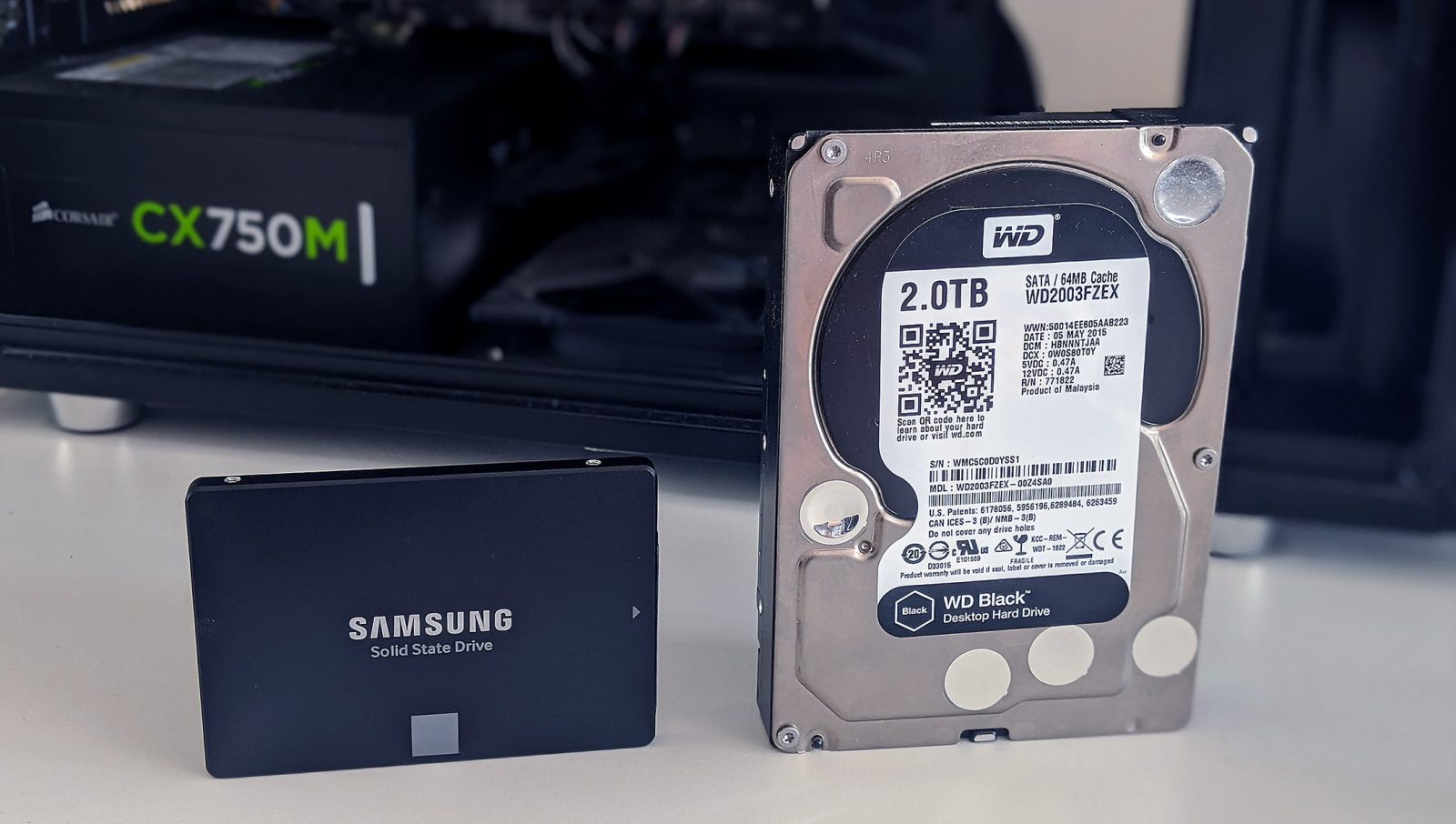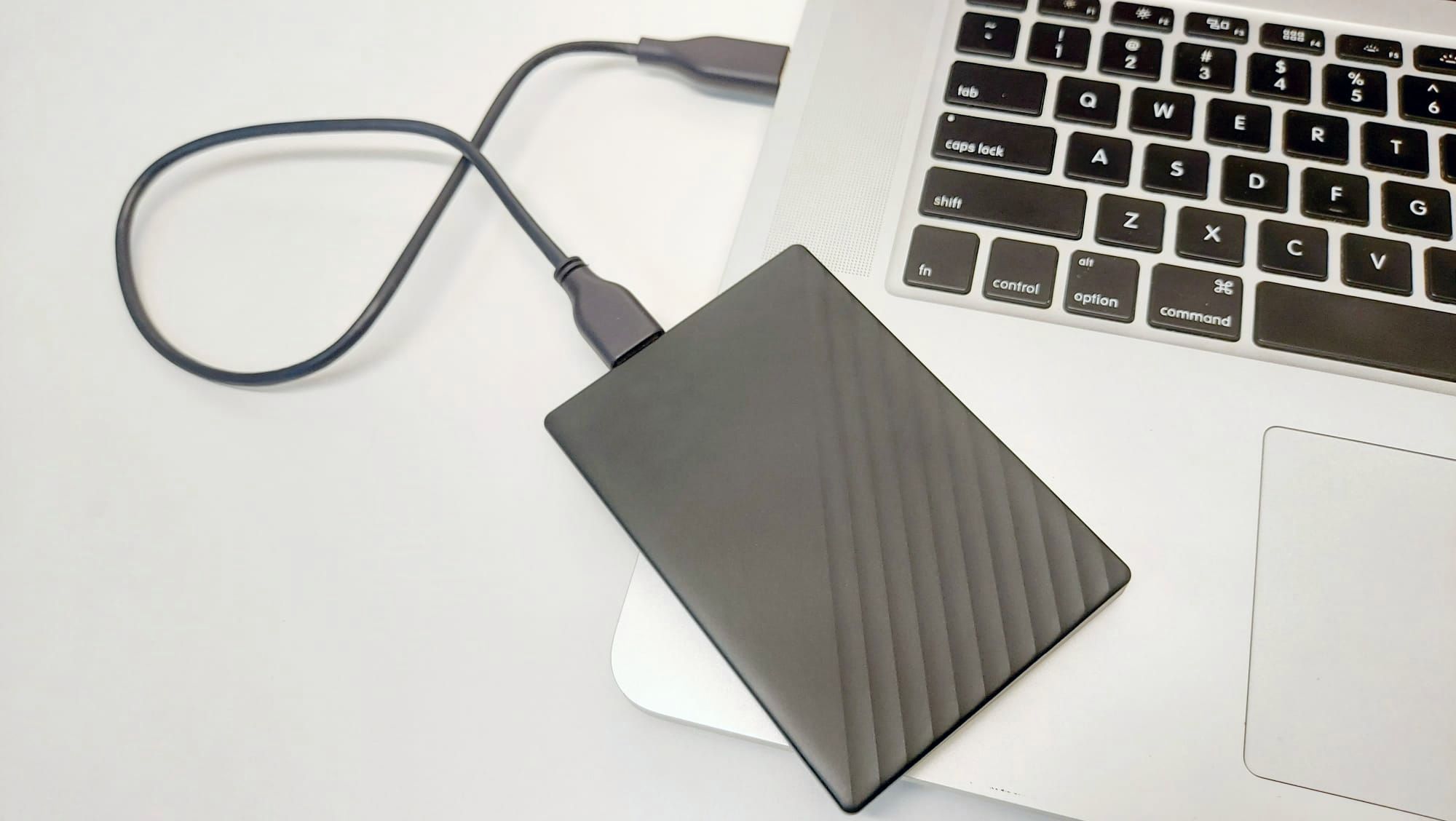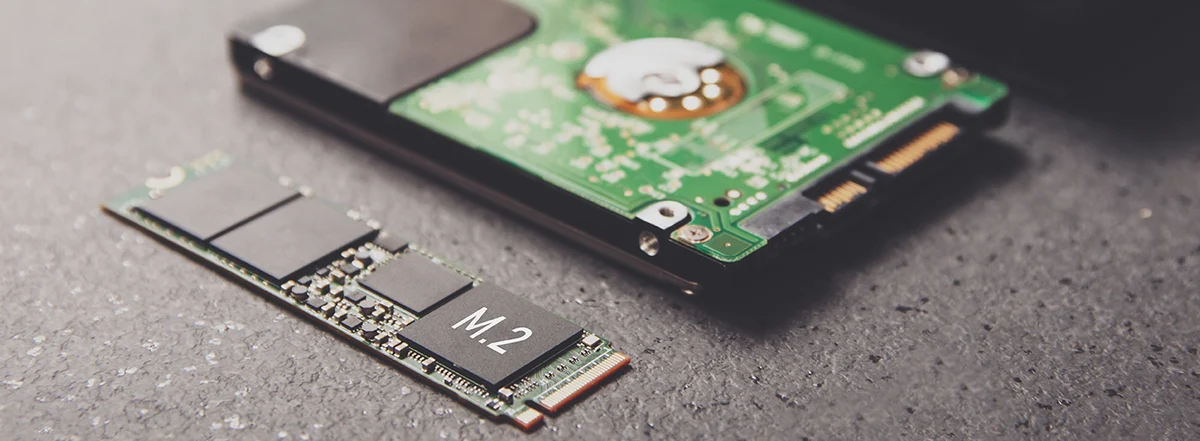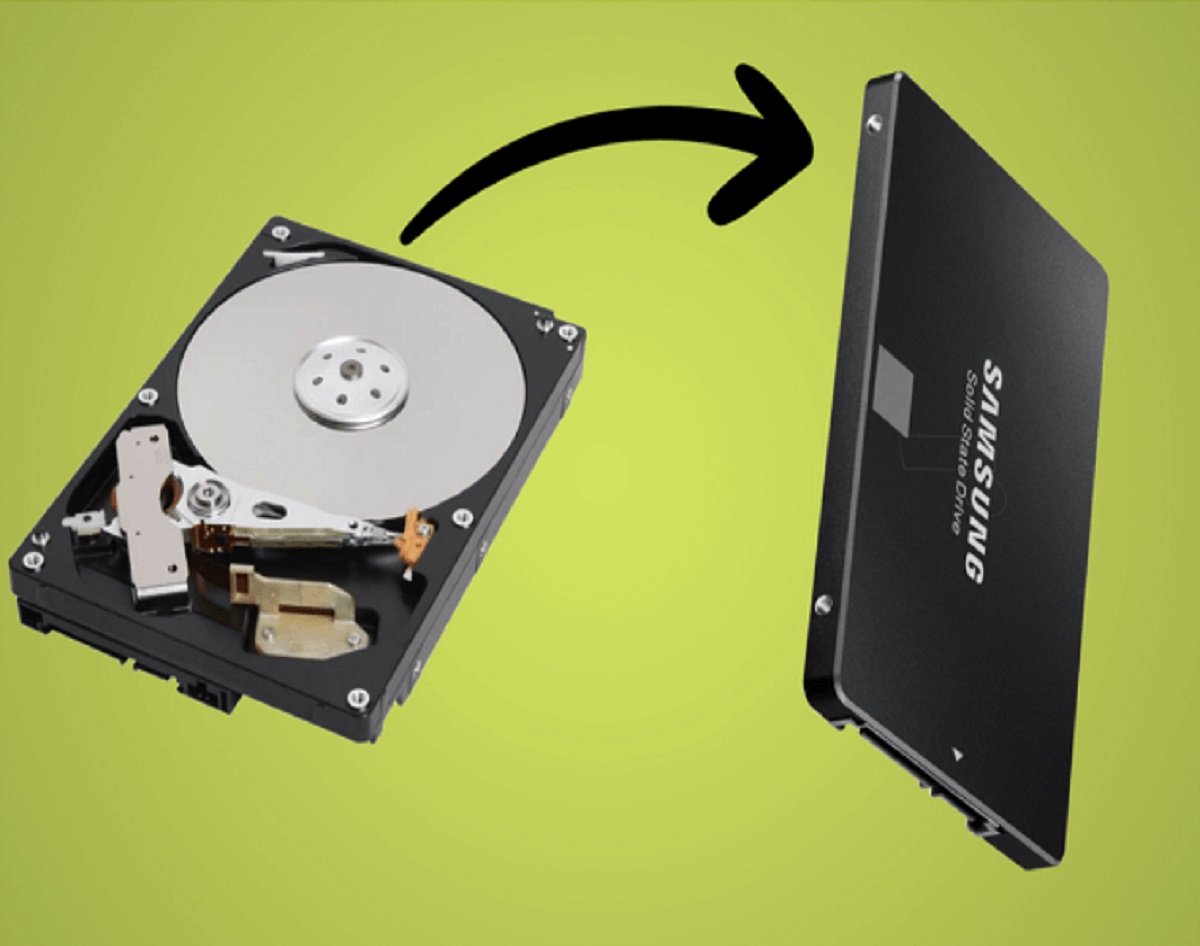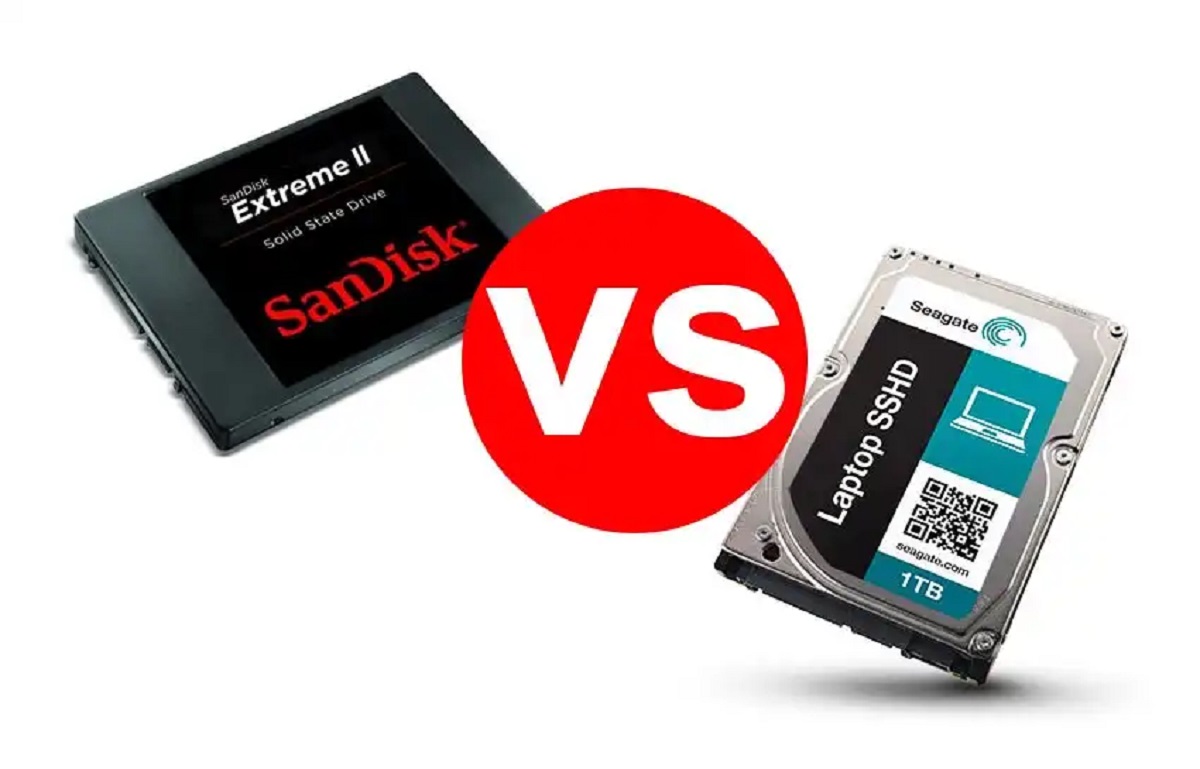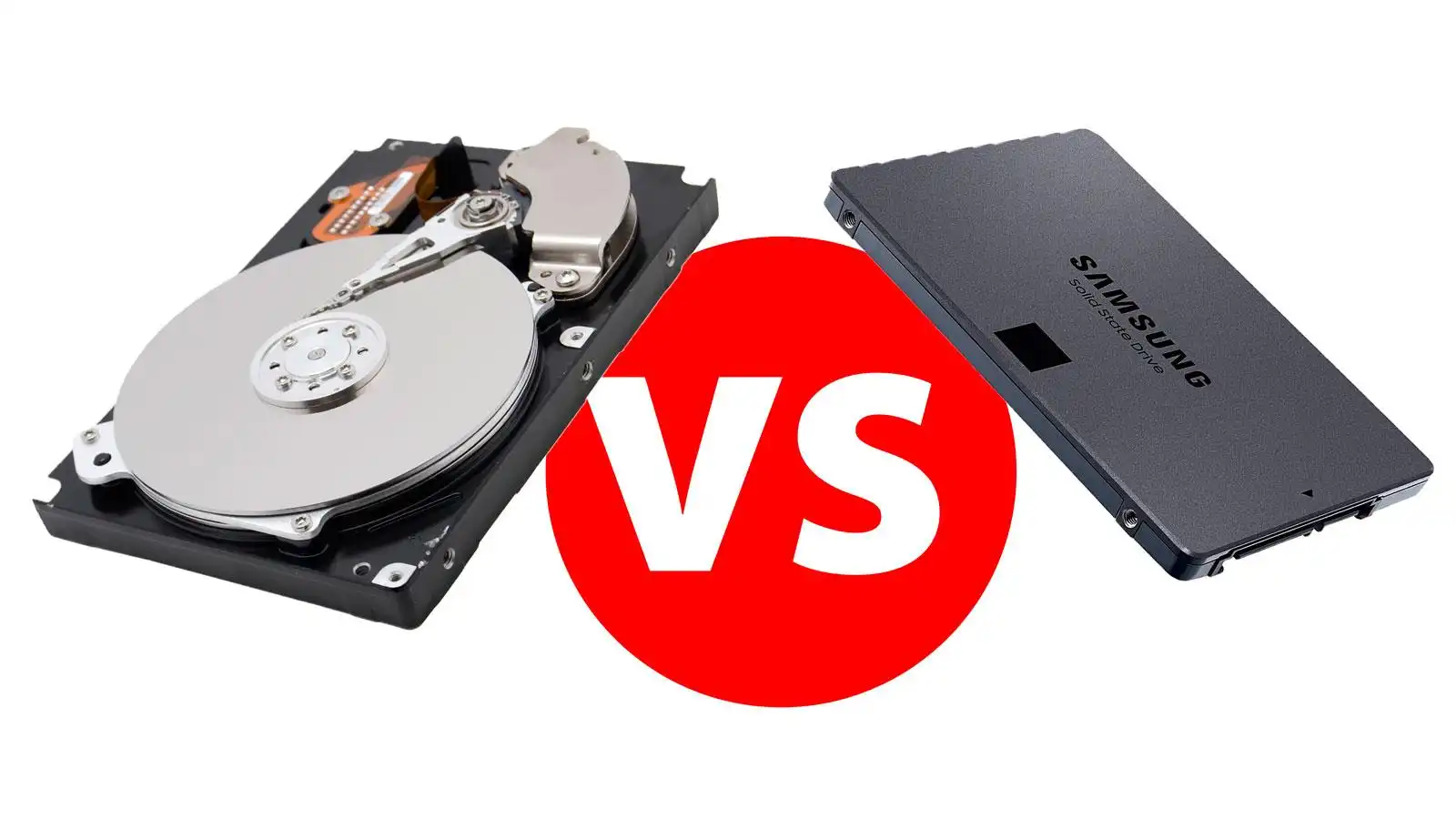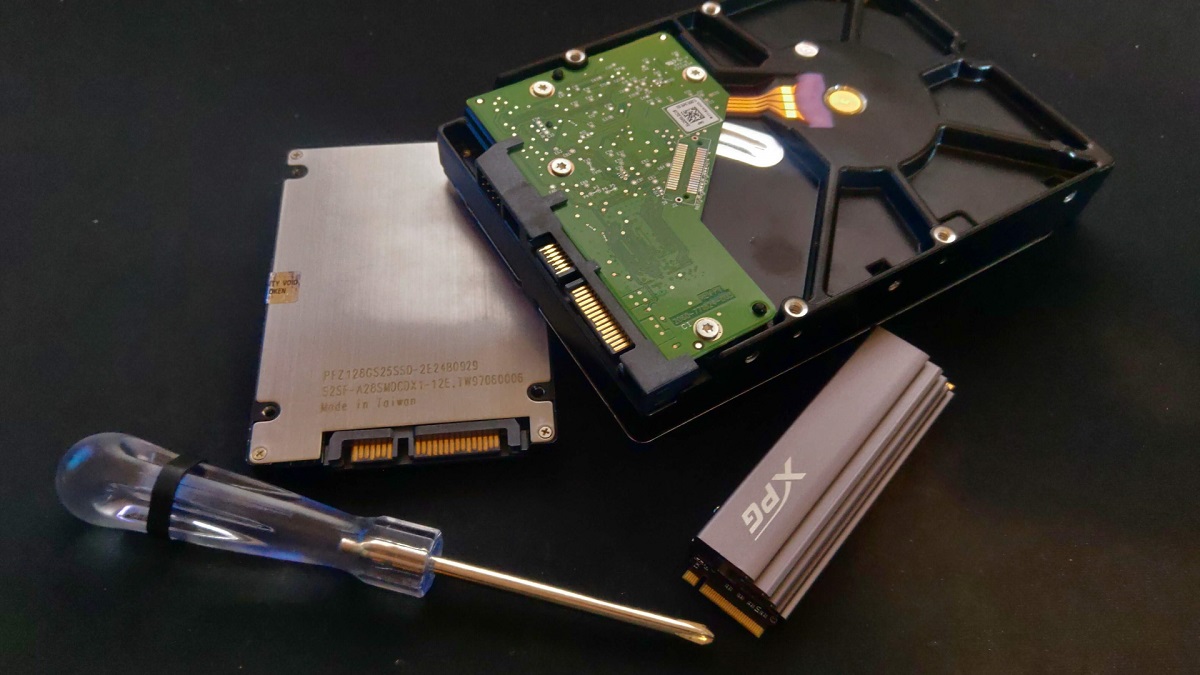Introduction
The rapid advancement of technology has brought about significant changes in the storage industry. Today, when it comes to storing and accessing data, two primary options dominate the market – Solid State Drives (SSD) and Hard Disk Drives (HDD). Both offer storage solutions for various devices, including desktop computers, laptops, and even servers. Understanding the differences between SSD and HDD can help you make an informed decision about which option best suits your needs.
Solid State Drives, commonly known as SSDs, and Hard Disk Drives, also referred to as hard drives, are two distinct types of storage devices with unique characteristics. While the ultimate goal remains the same – to store and retrieve data – these two technologies use different methods to achieve it.
In this article, we will delve into the differences between SSD and hard drives, examining their technology, physical aspects, performance capabilities, power consumption, durability, noise levels, and costs. By the end, you will have a clearer understanding of whether an SSD or hard drive is the right choice for your storage needs.
Definition of SSD
A Solid State Drive (SSD) is a type of storage device that uses flash memory to store and retrieve data. Unlike traditional hard disk drives (HDDs) that rely on spinning disks and magnetic read/write heads, SSDs have no moving parts. This key difference in design contributes to their unique set of characteristics and advantages.
SSDs are composed of memory chips organized into a grid-like structure. These memory chips, typically NAND flash memory, retain data even when the power supply is disconnected. This allows for faster data access and retrieval compared to HDDs.
One of the essential features of an SSD is its ability to access data randomly. Unlike HDDs, which depend on the read/write heads physically moving across the spinning disks to locate data, an SSD can directly access any block of data, significantly reducing seek times and improving overall performance.
Additionally, SSDs offer higher data transfer rates compared to HDDs. Since data can be accessed from multiple locations simultaneously, SSDs can read and write data much faster, resulting in improved system responsiveness and reduced loading times for applications and files.
Over the years, SSD technology has evolved, and newer generations of SSDs have emerged. SATA-based SSDs, using the Serial ATA interface, were the early iterations, offering improved speeds but limited by the interface’s capabilities. PCIe-based SSDs, on the other hand, utilize the faster PCIe interface, delivering even higher performance.
SSDs have become increasingly popular due to their superior performance, lower power consumption, and compact form factor. They are commonly used in laptops, ultrabooks, tablets, and gaming consoles, where speed and portability are crucial factors.
Definition of Hard Drive
A Hard Disk Drive (HDD), also known as a hard drive, is a traditional storage device that utilizes rotating disks and magnetic read/write heads to store and retrieve data. It has been the primary storage solution for computers and other devices for several decades.
The core components of a hard drive include platters, read/write heads, an actuator arm, and a spindle motor. The platters, made of glass or aluminum, are coated with a thin magnetic layer that stores the data. The read/write heads, mounted on an actuator arm, move across the surface of the spinning platters to read and write data. The spindle motor rotates the platters at high speeds, typically ranging from 5,400 to 15,000 revolutions per minute (RPM).
When data is written to a hard drive, the magnetic read/write heads change the polarity of the tiny magnetic particles on the platter’s surface. This change in polarity is then detected when the data is read back. The read/write heads move very close to the platter surface without physical contact, floating on a thin cushion of air created by the spinning platters. This delicate mechanism requires precision engineering and careful handling to prevent data loss or damage to the drive.
Hard drives are available in various capacities, typically measured in terabytes (TB) or gigabytes (GB). The larger the capacity, the more data the hard drive can store. Unlike SSDs, hard drive performance can be impacted by fragmentation, where the data is not stored contiguously on the platters. Fragmentation can lead to slower read and write speeds and reduced overall performance. However, defragmentation tools can be used to optimize hard drive performance by rearranging the data.
Hard drives are widely used in desktop computers, servers, and consumer electronics that require large storage capacities at a more affordable cost. Their long-standing presence in the market has led to a wide range of interfaces, including Serial ATA (SATA) and SCSI for traditional hard drives, and SAS for enterprise-grade hard drives.
Technology Used in SSD
Solid State Drives (SSDs) utilize advanced technology that differs significantly from traditional hard disk drives (HDDs). The primary technology employed in SSDs is NAND flash memory, a type of non-volatile storage that retains data even when the power supply is disconnected.
NAND flash memory is composed of numerous memory cells that store data as electrical charges. These cells are organized into pages and blocks, allowing for efficient and fast data read and write operations. Within each cell, there are floating-gate transistors that store the electrical charge, representing a binary state of 0 or 1.
One of the significant advantages of NAND flash memory is its ability to perform random access to any location, making it much faster than the sequential access method used in HDDs. This random access capability allows SSDs to access any data block instantaneously, resulting in faster read and write speeds and reduced seek times.
To manage the storage capacity and performance of SSDs, they incorporate a controller. The controller acts as the brain of the SSD, responsible for managing data storage, error correction, wear leveling, garbage collection, and other essential functions. The controller uses complex algorithms and techniques to ensure optimal performance, reliability, and longevity of the SSD.
SSDs also leverage various techniques to enhance performance further. One such technique is TRIM, which allows the operating system to inform the SSD which blocks of data are no longer in use, enabling the SSD to optimize its space utilization and improve performance. Additionally, SSDs utilize wear leveling algorithms to distribute data evenly across the memory cells, ensuring that the cells wear out at similar rates and extending the lifespan of the SSD.
As technology has progressed, new types of NAND flash memory have been developed, such as Single-Level Cell (SLC), Multi-Level Cell (MLC), and Triple-Level Cell (TLC). These different types offer varying levels of durability, performance, and storage capacity, allowing SSD manufacturers to cater to different market segments and user requirements.
Overall, the technology used in SSDs, particularly NAND flash memory and advanced controllers, leads to faster data access, improved system responsiveness, and greater power efficiency compared to traditional hard drives. As advancements continue, the performance and capacity of SSDs are expected to evolve, making them an increasingly popular choice for storage solutions.
Technology Used in Hard Drive
Hard Disk Drives (HDDs) rely on a different technology compared to Solid State Drives (SSDs). HDDs use magnetic storage technology, which involves rotating disks and magnetic read/write heads to store and retrieve data.
The heart of an HDD is the spinning disk or platter, typically made of glass or aluminum. The platter is coated with a thin magnetic layer that stores the data. Multiple platters are stacked on a spindle and rotate at high speeds, usually ranging from 5,400 to 15,000 revolutions per minute (RPM). The rotational speed directly affects the performance of the hard drive, with higher RPMs resulting in faster data access.
To read and write data on the platters, HDDs utilize magnetic read/write heads. These heads are mounted on an actuator arm that moves across the surface of the spinning platters. The read/write heads are equipped with tiny electromagnets that create magnetic fields to align the magnetic particles on the platter’s surface, allowing data to be written or retrieved.
When data is written, the read/write heads modify the magnetic polarity of the particles on the platter’s surface. This change in polarity is then detected when the data is later read. The read/write heads remain very close to the platter surface without physical contact, floating on a thin cushion of air created by the rotational speed of the platters. This mechanism is delicate and requires precise engineering to ensure the heads do not come into contact with the platters, which could result in data loss or damage to the drive.
HDDs also utilize different interfaces to connect to a computer or other devices. The Serial ATA (SATA) interface is one of the most commonly used interfaces for consumer-grade HDDs. It allows for high-speed data transfer between the hard drive and the computer’s motherboard. Other interfaces, such as SCSI and SAS, are used in enterprise-grade HDDs to provide additional features and increased performance for demanding applications and server environments.
While HDD technology has evolved over the years, the core principles of magnetic storage remain the same. Advancements in techniques like perpendicular magnetic recording (PMR) and shingled magnetic recording (SMR) have increased storage capacities and densities in HDDs, enabling them to offer large capacities at a more affordable cost compared to SSDs.
In summary, the technology used in hard drives revolves around rotating platters, magnetic read/write heads, and interfaces like SATA. HDDs provide a reliable and cost-effective solution for storing large amounts of data but may have slower data access speeds compared to SSDs due to mechanical components and sequential access methods. Nonetheless, ongoing advancements in HDD technology continue to improve their performance and enable the development of higher-capacity drives for various storage needs.
Physical Differences
Solid State Drives (SSDs) and Hard Disk Drives (HDDs) differ in their physical characteristics due to the underlying technologies used in these storage devices.
Starting with SSDs, these drives are typically smaller and lighter compared to traditional hard drives. The compact form factor of SSDs allows for easy installation in various devices, including laptops, ultrabooks, and tablets. Additionally, SSDs have no moving parts, which makes them more resistant to physical shock and vibration, reducing the risk of damage and data loss. This durability makes SSDs particularly suitable for portable devices and environments where rough handling may occur.
On the other hand, HDDs are generally larger and heavier due to their mechanical components. The presence of spinning disks, read/write heads, actuator arms, and spindle motors contribute to the larger physical size and weight of HDDs. These factors make HDDs more suitable for stationary devices like desktop computers and servers, where size and weight considerations are less critical.
SSDs also have the advantage of flexibility in terms of mounting options. They can be easily installed in various ways, including being directly connected to a motherboard via a SATA or PCIe interface, or being mounted in a drive bay using an adapter or converter. This versatility allows for easy integration into different systems and devices.
Contrarily, traditional hard drives require more specific mounting options. They usually need to be mounted in drive bays within the computer case, utilizing screws or specialized mounting brackets. This fixed mounting mechanism limits the installation options for HDDs and may require additional hardware or modifications for installation in certain devices.
Moreover, the power and data cables used with SSDs and HDDs may differ. SSDs typically use SATA cables to connect to the motherboard or a PCIe connection for faster data transfer. On the other hand, HDDs generally use the same SATA cables for data transfer, but may also require an additional power cable due to their mechanical components and power requirements.
In summary, SSDs are smaller, lighter, and more durable due to their lack of moving parts, making them ideal for portable devices and environments where physical shock and vibration are concerns. HDDs are larger and heavier due to their mechanical components and are typically suited for stationary devices like desktop computers and servers. The flexibility of installation options and the type of cables used also differ between SSDs and HDDs, catering to their specific physical characteristics and requirements.
Speed and Performance Comparison
When it comes to speed and performance, Solid State Drives (SSDs) outshine Hard Disk Drives (HDDs) due to their inherent technological differences.
One of the notable advantages of SSDs is their faster data access and transfer speeds. Since SSDs have no moving parts and use flash memory technology, they can read and write data much quicker than HDDs. The absence of physical seek time, which is required for the read/write heads in HDDs to locate data on spinning disks, greatly reduces the latency in SSDs. As a result, applications load faster, files open more quickly, and overall system responsiveness is significantly improved with SSDs.
Furthermore, SSDs excel in random read and write operations, making them ideal for tasks that require quick access to data. With their ability to access any block of data instantaneously, SSDs offer superb performance when opening multiple applications simultaneously, multitasking, or running resource-intensive software, such as video editing or gaming.
In contrast, HDDs have slower data access speeds due to their mechanical components and sequential access method. The read/write heads need to physically move across the spinning platters to locate data, resulting in higher seek times. This mechanical process introduces extra latency, making the overall performance of HDDs relatively slower compared to SSDs.
HDDs do exhibit better performance in sequential read and write operations, especially when dealing with large files or data transfers. The continuous rotation of the platters allows HDDs to read or write sequential data more efficiently. This characteristic makes HDDs suitable for applications that involve large data storage, such as data backups, media libraries, or archival purposes.
It is worth noting that while SSDs can deliver impressive read and write speeds, their performance can vary depending on the type of SSD and the workload being performed. Factors such as the SATA or PCIe interface used, the type of NAND flash memory (SLC, MLC, TLC), and the controller’s efficiency can impact an SSD’s overall performance.
In summary, SSDs offer superior speed and performance compared to HDDs due to their absence of moving parts, faster data access, and flash memory technology. SSDs excel in random access tasks, providing faster data retrieval and overall system responsiveness. HDDs, on the other hand, have slower data access speeds due to their mechanical nature but perform well in sequential data operations and offer larger storage capacities at a lower cost.
Power Consumption Comparison
When it comes to power consumption, Solid State Drives (SSDs) have a significant advantage over Hard Disk Drives (HDDs) due to their inherent differences in technology and design.
SSDs consume less power compared to HDDs primarily because they have no moving parts. Since there are no spinning disks and read/write heads to rotate or actuator arms to move, the power requirements of SSDs are significantly lower. This low power consumption is especially beneficial for portable devices such as laptops, tablets, and ultrabooks, as it helps to preserve battery life, allowing users to work or play for extended periods without the need for frequent recharges.
HDDs, on the other hand, consume more power due to the mechanical components involved in their operation. The spinning platters, rotating at high speeds, and the movement of the read/write heads, actuator arms, and spindle motors all require additional power. This higher power consumption is a factor to consider, particularly in scenarios where energy efficiency and battery life are of concern, such as in laptops or devices running on limited power sources.
Furthermore, SSDs are more efficient in terms of power usage during data access. The absence of mechanical movements in SSDs results in faster data access and virtually eliminates the power consumption associated with seek times. This efficiency translates to reduced power drain during read and write operations, contributing to overall lower power consumption.
In contrast, HDDs consume more power during data access due to the mechanical process involved in retrieving and writing data. The spinning platters, read/write heads, and other mechanical components require continuous power supply, leading to higher power consumption, especially during intensive read/write operations or when accessing fragmented data.
It is important to mention that power consumption can vary depending on specific models and manufacturers. Some newer models of HDDs incorporate energy-saving features to reduce power consumption when idle or in low-demand situations. However, even with such improvements, HDDs generally consume more power compared to SSDs.
In summary, SSDs have a clear advantage over HDDs when it comes to power consumption. The absence of moving parts and lower energy demand during data access make SSDs significantly more power-efficient. This advantage is crucial for portable devices and environments where energy efficiency and battery life are prioritized. HDDs, being mechanical devices, consume more power due to the continuous rotation of platters and the movement of read/write heads and other mechanical components.
Durability Comparison
When it comes to durability, Solid State Drives (SSDs) have a distinct advantage over Hard Disk Drives (HDDs) due to their differences in design and technology.
SSDs are inherently more durable because they have no moving parts. Traditional HDDs rely on spinning disks, read/write heads, actuator arms, and other mechanical components. These moving parts make HDDs more susceptible to damage caused by physical shock, vibration, or accidental drops. The impact of such events can lead to data loss or permanent damage to the mechanical components, rendering the HDD inoperable.
In contrast, SSDs are built with solid-state technology, utilizing flash memory cells to store and retrieve data. The absence of moving parts makes SSDs more resistant to physical shock and vibration. They can withstand accidental drops or bumps without compromising data integrity. This durability makes SSDs particularly beneficial for portable devices like laptops, tablets, and ultrabooks, which are more prone to being jostled or subjected to rough handling.
Furthermore, SSDs are not affected by issues such as head crashes or motor failure, which can occur in HDDs due to their mechanical components. SSDs also have an advantage in environments where temperature and humidity fluctuations are common, as they are not as sensitive to such conditions as HDDs.
Another factor contributing to the durability of SSDs is their resistance to wear and tear. SSDs employ wear leveling algorithms that evenly distribute data writes across the memory cells, reducing the wear on specific areas of the drive and extending its overall lifespan. Additionally, the lack of physical contact between components in SSDs eliminates the risk of wear and tear due to friction or mechanical failures, further enhancing their durability.
HDDs, on the other hand, have a higher likelihood of mechanical failures or component wear over time. The spinning disks, read/write heads, and other moving parts are subject to wear, and over time, the mechanical components can degrade, resulting in reduced performance or complete failure.
It is important to note that despite their durability advantages, SSDs can still experience electronic failures, just like any other electronic device. However, the absence of mechanical parts in SSDs significantly reduces the risk of damage from physical shocks and vibrations, making them more robust and reliable in day-to-day usage.
In summary, SSDs have a distinct advantage in terms of durability over HDDs due to their lack of moving parts. The solid-state technology used in SSDs enhances their resistance to physical shock, vibration, and wear, making them more durable and reliable in various environments. HDDs, with their mechanical components, are more prone to physical damage and wear over time, which can lead to reduced performance or complete drive failure.
Noise Comparison
When it comes to noise levels, Solid State Drives (SSDs) have a distinct advantage over Hard Disk Drives (HDDs) due to their differences in design and technology.
SSDs, being completely solid-state devices, have no moving parts, resulting in near-silent operation. Since there are no spinning disks, read/write heads, or actuator arms in SSDs, there is no mechanical noise produced during data access or transfer. The absence of these moving components makes SSDs virtually noiseless, providing a quiet computing experience. This is especially beneficial for users who prefer a noise-free environment or for situations where noise reduction is important, such as in recording studios or noise-sensitive work environments.
On the other hand, HDDs do produce noticeable noise during operation, primarily due to their mechanical components. The spinning disks, read/write heads, and actuator arms create audible sounds as they move and position themselves to read or write data. The rotational speed of the platters and the movements of the read/write heads result in a slight humming or whirring noise. Additionally, accessing fragmented data or engaging in intensive read or write operations may cause the HDD to produce more noticeable clicking or grinding sounds.
While HDD manufacturers have made efforts to reduce noise levels by implementing quieter motors and refinements in mechanical designs, the inherent nature of the moving parts in HDDs means that some noise will always be present during operation. For users who prioritize a silent or noise-reduced environment, SSDs are the ideal choice.
It is worth noting that the noise levels of HDDs may vary depending on factors such as the rotational speed of the platters, the quality of the mechanical components, and the overall design of the drive. Smaller form factor HDDs, like those used in laptops or portable external drives, generally produce less noise compared to larger desktop HDDs.
The lack of moving parts in SSDs not only contributes to their silent operation but also reduces the risk of noise-related issues. For example, vibrations caused by HDDs can sometimes lead to audible system resonance or affect other nearby components. SSDs eliminate this concern as they are free from mechanical vibrations, ensuring a quieter and more stable computing environment.
In summary, SSDs have a significant advantage in terms of noise levels compared to HDDs. The absence of moving parts in SSDs results in near-silent operation, providing a noise-free computing experience. HDDs, on the other hand, produce noticeable noise due to their mechanical nature, including the spinning disks and movement of read/write heads and actuator arms. While efforts have been made to reduce noise levels in HDDs, the inherent design of these drives means some noise will always be present during operation.
Cost Comparison
When it comes to cost, there are significant differences between Solid State Drives (SSDs) and Hard Disk Drives (HDDs) due to factors such as production costs, technology, and storage capacity.
Overall, SSDs tend to be more expensive than HDDs on a per-gigabyte (GB) basis. This is mainly because the production costs of SSDs, especially those utilizing higher-quality NAND flash memory, are typically higher compared to HDDs. The advanced technology and complex manufacturing processes involved in producing SSDs contribute to their higher price points.
Additionally, as SSDs offer numerous benefits such as faster data access, lower power consumption, and increased durability, they are often prioritized by users who require top-tier performance or have specific requirements for their storage needs. This high demand for SSDs further drives their prices up in the market.
On the other hand, HDDs are generally more cost-effective when it comes to storage capacity. HDD technology has been around for a long time, allowing for efficient production and mass manufacturing. As a result, HDDs provide larger storage capacities at a lower cost compared to SSDs. Users who require high-capacity storage solutions, such as for media libraries, backups, or archival purposes, often opt for HDDs to get the most storage space for their budget.
It is important to consider the cost per gigabyte when comparing SSDs and HDDs. While SSDs may have a higher price per GB, their superior performance and other advantages can offset this cost. Users looking for fast data access, improved system responsiveness, and the benefits of solid-state technology may find the higher cost of SSDs worth the investment.
Another factor to note is that SSD prices have been steadily decreasing over the years as technology advances and production costs decrease. As a result, the price difference between SSDs and HDDs continues to narrow. This trend makes SSDs more affordable and accessible to a wider range of users, allowing them to experience the numerous benefits these drives offer.
In summary, SSDs are generally more expensive than HDDs on a per-gigabyte basis. The production costs and advanced technology involved in SSDs contribute to their higher price points. However, HDDs provide a more cost-effective solution for users who prioritize storage capacity over performance. As SSD technology advances and production costs decrease, the price difference between SSDs and HDDs continues to diminish, making SSDs more affordable and attractive to a broader range of users.
Conclusion
In conclusion, Solid State Drives (SSDs) and Hard Disk Drives (HDDs) offer distinct advantages and serve different purposes in the storage industry. Understanding the differences between these two storage options is essential in making an informed decision based on individual needs and priorities.
SSDs excel in areas such as speed, performance, power consumption, durability, and noise levels. With their flash memory technology and absence of moving parts, SSDs provide faster data access, improved system responsiveness, lower power consumption, increased durability, and near-silent operation. These qualities make SSDs ideal for users who require top-tier performance, portability, energy efficiency, and a noise-free computing environment.
On the other hand, HDDs have their advantages, particularly in terms of storage capacity and cost. HDDs offer larger storage capacities at a lower cost per gigabyte compared to SSDs. They are more suitable for users who prioritize high-capacity storage and are budget-conscious. HDDs still play a crucial role in applications such as media libraries, backups, and archival purposes, where the sheer volume of storage space outweighs the need for faster access speeds.
Ultimately, the choice between SSDs and HDDs boils down to the specific requirements, preferences, and budget of the user. SSDs provide superior performance and enhanced features, making them the preferred option for users who value speed, responsiveness, durability, and energy efficiency. On the other hand, HDDs offer cost-effective and high-capacity storage for users with extensive storage needs who are less concerned with performance.
It is important to consider factors such as data access requirements, budget, compatibility, and long-term storage plans when deciding between SSDs and HDDs. Depending on individual needs, a combination of both SSDs and HDDs can also be utilized to strike a balance between performance, capacity, and cost.
As technology advances and SSD prices gradually decrease, the demand for SSDs continues to grow, shifting the storage landscape towards solid-state solutions. However, it is worth noting that HDDs still maintain a significant presence in the storage market, providing a cost-effective and reliable option for a wide range of users and applications.







